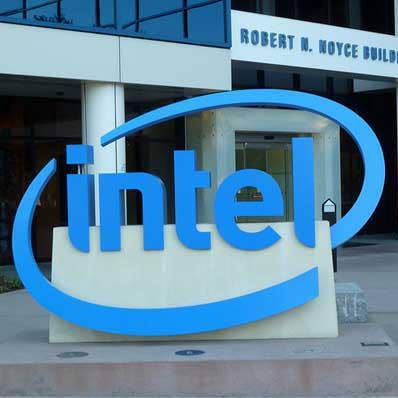Intel Says Third-Party Shortages Dinged An Otherwise Banner 2021
‘This unprecedented demand continues to be tempered by supply chain constraints as shortages in substrates, components and foundry silicon has limited our customers’ ability to ship finished systems across the industry,’ Intel CEO Pat Gelsinger says on the company’s latest earnings call.

Intel said shortages from third-party suppliers held back sales for what was an otherwise banner year in 2021 – an issue that CEO Pat Gelsinger expects to persist into 2023 as the chipmaker enacts its multibillion-dollar plan to expand manufacturing capacity.
Gelsinger said on Wednesday that Intel set a new record for revenue in 2021, which grew 2 percent to $74.7 billion from the previous year, despite supply chain challenges.
[Related: Intel Wins Court Appeal Of $1.2B EU Antitrust Fine]
“This unprecedented demand continues to be tempered by supply chain constraints as shortages in substrates, components and foundry silicon has limited our customers’ ability to ship finished systems across the industry,” he said during Intel’s earnings call for the fourth quarter of 2021.
The chipmaker also reported new yearly records for its PC business, the Client Computing Group, as well as the IoT Group and its Mobileye business.
However, the Client Computing Group’s revenue declined 7 percent year-over-year $10.1 billion in the fourth quarter. This slump mainly happened in the notebook segment, whose revenue shrunk by 16 percent as desktop sales grew 19 percent.
Gelsinger blamed the notebook slowdown on ecosystem constraints, though he said the ramp down of Intel’s modem business also contributed to the overall sales dip for the Client Computing Group.
“But constraints have widely impacted other markets, including automotive, the Internet of Things and the data center,” Gelsinger said.
Another area impacted by ecosystem constraints was the Programmable Solutions Group, Intel’s FPGA business. Intel’s new CFO, David Zinsner, said if it wasn’t for such issues, the business could have realized more than an additional $500 million in revenue for 2021.
Gelsinger said while ecosystem constraints will continue into 2023, he expects incremental improvements over this period.
The beacon of hope for Intel is its IDM 2.0 strategy, an evolution of the company’s integrated device manufacturing model, according to Gelsinger. He said this strategy, which lets the company rely on a mix of internal and external manufacturing capacity, puts Intel in a “superior position” by giving it control of over its manufacturing network and supply chain.
“We are able to react to rapid changes in demand and help solve challenges for our customers, suppliers and partners,” he said. “Equally important as an IDM, we remain more resilient to foundry price increases as only a minority of our volume is produced by third parties.”
An important part of Intel’s IDM 2.0 strategy is building out new manufacturing plants, also known as fabs. But while it will take years for the company’s newly fab projects in Arizona and Ohio to come online, Gelsinger reiterated that the company remains “on or ahead of schedule” for the chipmaker’s next-generation process nodes that will give Intel “unquestioned leadership” in 2025.
Gelsinger said Intel’s manufacturing execution “continued to improve,” with the company shipping a record number of server chips in the fourth quarter, reducing 10-nanometer wafer costs by more than 30 percent year-over-year and increasing substrate capacity.
“Finally, as part of our strategy to use both internal and external manufacturing, we signed multiple long-term supply agreements ranging from foundry partners to substrates to equipment suppliers that will support the growth of our business for years to come,” he said.
The chipmaker’s fourth quarter was a contributor to Intel’s standout 2021, with the company reporting a quarterly record for overall sales, which grew 3 percent year-over-year to $18.9 billion. It also hit quarterly sales records for the IoT Group and Data Center Group, the latter of which grew 20 percent year-over-year, largely thanks to strong demand from enterprise customers.
However, as Intel warned last quarter, the company expects its multibillion-dollar investments in expanding manufacturing capacity — which includes a recently announced $20 billion for a “mega-site” in Ohio — to weigh down on margins over the next few years.
As such, the company forecasted that its gross margin in the first quarter of 2022 will decline by 6.8 points to 52 percent from the same period last year. Earnings per share for the first quarter are expected to be 80 cents, down 40 percent year-over-year.
But as Gelsinger stressed before, Zinsner said the company’s pricey expansion plan will ultimately drive greater returns for investors down the line.
“It’s exactly where we thought we would be in the first fiscal quarter,” Zinsner said. “This is the number that we were planning to drive the business to, and ultimately, the [return on investment] on all the investments we’re making that drive headwinds and the gross margins for the first quarter, we‘ll turn around and drive a very good ROI down the road.”
Intel’s stock price was down more than 2 percent in after-hours trading Wednesday.